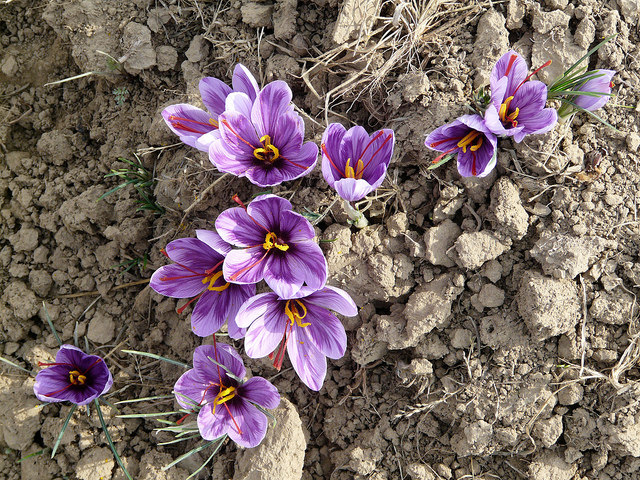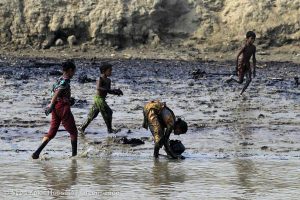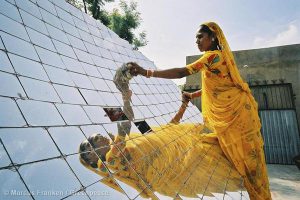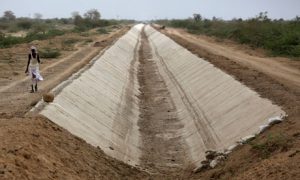Battered by erratic weather and constant low yields, saffron growers in India’s Jammu and Kashmir state have got a helping hand with the government introducing the Weather Based Crop Insurance Scheme for them from this year.
Over 16,000 families in around 200 villages are involved in producing saffron, perhaps the costliest spice on earth at more than US$3,000 per kilogramme. While in India, saffron is grown only in Kashmir, the highly valued fragrant spice, added sparingly to dishes savoury and sweet, is also produced in a few other countries such as Iran and Spain.
But the last few years have been tough with reports suggesting that the floods of 2014 and erratic rain could have lead to a 75% shortfall in saffron production in Kashmir.
Hoping to give farmers in the state a silver lining in the dark clouds of adverse climate changes, the government has, besides the insurance scheme, announced it will provide greater relief. According to the new order, more farmers whose produce has been damaged due to natural calamities will be entitled to relief under the State Disaster Relief Fund.
Farmers who have lost 33% of their crops and produce due to rains and other natural disasters will now be entitled to relief (down from the previous threshold of 50%), a government spokesperson said. “Similarly, the rate of compensation has also been increased for various categories of damages.”
The saffron crop insurance scheme was supposed to start from September 2014, but the worst floods in six decades effectively stalled its implementation.
“Had it got implemented last year, we would have got compensated for 70% of the crop being lost due to excessive rain,” Abdul Majeed, president of the Saffron Growers Association, told thethirdpole.net.
“But we are happy that our crop will be covered by insurance from this year. We are going to deposit the premium within a few days,” he said.
The last few years have seen Kashmir farmers suffer a disastrous slump in saffron production. “For the past few years, the weather uncertainties have cost us almost every year. Either it rains heavily when the crop doesn’t need rain or it doesn’t rain at all when the crop needs it,” Majeed said.
“Till 1999–2000, Kashmir was receiving well distributed precipitation in terms of rain and snow to the extent of 1000–1200 mm which at present has decreased to 600–800 mm,” Firdous Ahmad Naqvi, an agricultural scientist and one of the authors of a study on the impact of climate change in Jammu and Kashmir, has noted.
The reduction in saffron production is also being attributed to lack of high-yielding plant varieties, pollution from nearby cement factories, poor farming practices by the saffron growers and expensive costs of cultivation.
According to experts, the production of saffron is sensitive to changes in weather variables such as rainfall, temperature and humidity.
The insurance scheme
Altaf Andrabi, joint director of agriculture in the state government, added that weather factors had caused partial crop failure in recent years, thereby reducing the income of farmers.
Crop insurance, he told thethirdpole.net, is one alternative to managing risk in yield loss. The saffron crop would be covered for dry spells and insufficient or heavy rainfall and the agriculture department would share 50% of the premium which the farmers have to pay to insurance companies, he added, giving details.
According to the scheme, one hectare of saffron land would be insured against Rs.200,000 ($3,225) and the premium to be paid would be 12% of the insured sum.
Muneer Ahmad Kumar, technical officer at the agriculture department, added that experts had already given guidelines about weather-variables and the information was being shared with the farmers. “These guidelines or trigger events and the weather data from automatic weather stations (AWS) of the meteorological department will independently verify adverse weather events,” Kumar said.
“So, [farmers] are not required to submit proof of loss; the weather data will automatically decide the compensation paving way for speedy settlement of claims.”
Saffron cultivation
The cultivation of saffron in Jammu & Kashmir dates back to 500 AD. The mountainous state has a monopoly over production of this lucrative crop. India, however, still needs to import saffron as the region produces between 10-15 metric tonnes against the country’s total demand of around 40 metric tonnes.
It takes a lot of effort separate the stigma – the dried stigma is sold as the spice – from the flower. The crop grows once in a year.
Saffron production reached its peak in the 1990s with an average annual production of around 15.50 metric tonnes over 5,707 hectares, but both acreage and yields have declined since then. Land under saffron cultivation has shrunk about 40% since 1997 and production has slipped from about 16 tonnes to 10 tonnes, according to official records.
Now, per hectare production is less than 2 kilogrammes compared to around 6 kilogrammes in other parts of the world.
In 2010-11, the union agriculture ministry introduced the National Mission on Saffron which has finally making some impact.
“Under this mission, farmers were given a subsidy of Rs.264,000 ($4,258) per acre by way of technical and material support for rejuvenation of the saffron crop,” said Andrabi. “So far, an area of 1,876 hectares out of 3765 hectares of saffron land has been rejuvenated.”
Production or sale of fake saffron in Kashmir, as well as smuggling of lower quality saffron from Iran are also believed to have caused damage to Kashmir’s saffron trade.









